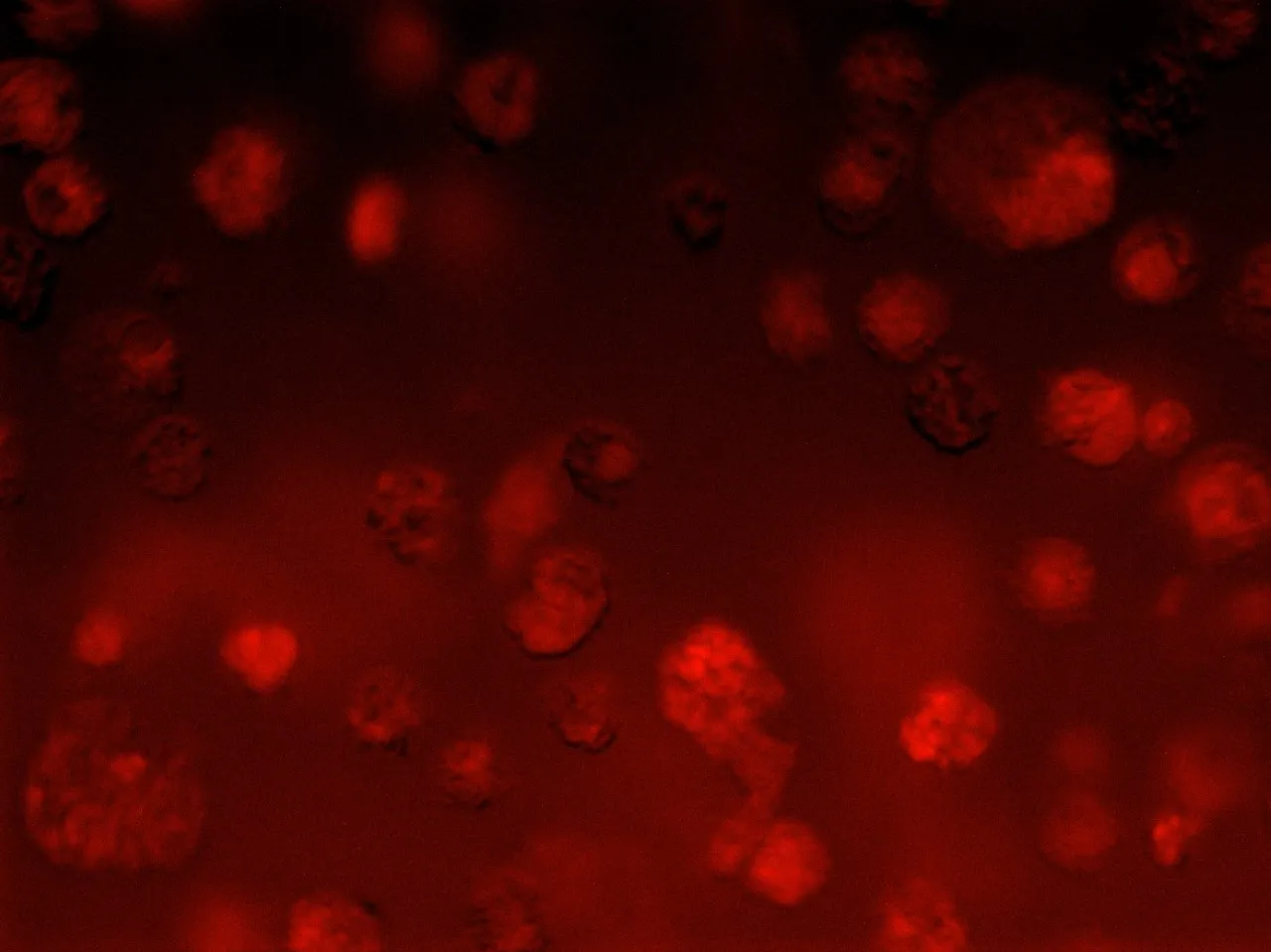HL-60 leukemia cells labeled with red (orange) fluorescent protein tag

I have been working with HL-60 leukemia cells for about a year now. I successfully transfected this cell line to express a red (orange) fluorescently labeled protein. I am currently studying how human immune cells respond to fungal particles invitro. We are specifically interested in Candida albicans infection in the blood. Fungal sepsis has a very high mortality rate.
HL-60 cells originally came from a patient with acute promyelocytic leukemia. This cell line grows as a suspension culture and used only in laboratory research. I believe the cell line was first established in the late 1970s. The first vial of cells I thawed were frozen and stored in LN2 since 2002. I now have my own collection of frozen HL-60 cells for future research stored away in the LN2 Dewar.
The reason I chose this particular cell line is because they can be induced to differentiate into neutrophil-like cells. Neutrophils are one of the immune cells that we study for sepsis. These cells are among the first to arrive at the site of an infection. They help signal the immune system to attack anything foreign. We discovered in our research that sepsis patients have an increased expression or upregulation of a particular protein on the cell surface of their neutrophils. This protein recognizes fungal elements.
The picture above is the successful transfection of HL-60 cells to overexpress this protein of interest with a tag so that we can visualize it under a fluorescent microscope. The cells were in media containing phenol red. There is some autofluorescence from the media making the background red. However, you can clearly see the surface of the cells with a bright red fluorescence in the 604nm channel. These are my preliminary findings.
It has been challenging to keep the cells alive after transfection. I recently switched to a high glucose growth media. I am also trying a new transfection method alongside the original method. I will be repeating the experiment again this week. This time, I will fix the cells on a slide so there is no autofluorescence. Once I have successfully transfected these cells again, I will induce them to differentiate and perform the same experiments that I have run on healthy human neutrophils and sepsis patient neutrophils. Eureka!